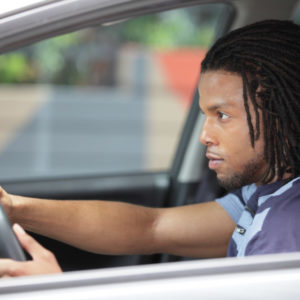I remember while in school, the distance between the hall of residence to the lecture hall was only a short distance (about 5 to 10 minutes, depending on how fast or slow one is walking). Yet my friends and I preferred to wait for the shuttle bus (which took 15
minutes before it arrived and we usually had to wait until it got full before leaving). In hindsight, I realise we could have made do with the exercise and the bonding with friends rather than sit on a bus and wait endlessly for it to get full.
Going to the United Kingdom, having to walk 20 to 30 minutes from my college building to my apartment did not seem like much of a stretch. Everyone was doing it. It was a way of life: the rich, the poor and the middle class all enjoyed walking or cycling to their various destinations. I realized I was healthier, looking fresh, saving money and most importantly burning calories.
Non-Motorized Transport, also called Human Powered Transportation and popularly referred to as NMT, is a mode of transportation for relatively short distances. This includes cycling, walking and the usage of small-wheeled transports such as scooters, hand carts, wheelchairs and skateboards.
According to Witting et al. (2006), short distance trips are the largest share of trips in urban cities, usually within 7 Kilometers. In Bogotá, Colombia, they have NMT policies that promote walking and cycling. In developing countries, NMT should be used more, but that is not the case. It is often seen as a means of transport for the poor and less privileged. Our excuse in Nigeria is often the poor road networks and transportation systems, which is justifiable, but we are still in the habit of taking motorized transports on the shortest of distances.
Developed countries are more in the habit of walking, cycling and using other means of NMT for various reasons. Some for exercise, others for financial constraints, nice weather, bonding with friends, tourism and many other reasons. According to the Victoria Transport Policy Institute (VTPI, 2010), 5-10% of car trips can be replaced by NMTs provided there are good policies in place to back up the pedestrians and cyclists.
Marianne, V. et al. (2017) emphasized that although walking is the dominant mode of transportation in Africa, it has not been given enough attention in terms of policy development and practical implementation. We as a people are focused on increasing motorization and expanding road networks. There are some barriers affecting NMT in Nigeria:
- Safety & Security
This is the biggest issue we face as a country as regards to NMT. Pedestrians and cyclists are vulnerable to roadside accidents. Inadequate NMT planning causes a high rate of pedestrian fatalities. Lack of guarantee of the safety and security of the pedestrians and cyclist is also a huge barrier. - Cost
For bicycles, the low-income earners cannot afford to purchase a bicycle/scooter. - Public Perception
The high-income earners who have the environment (provision of sidewalks) suitable for walking and the means to buy a bicycle usually do not because they do not want to be perceived as poor. Even students in Nigeria who live within campus drive to lectures because having a car shows class and affluence. - Lack of NMT Infrastructure
Developed countries have bicycle racking systems which enable them store their bicycles when not in use. There are sidewalks, walkways, zebra crossings, etc. There are only a few cycle lanes and designs for pedestrians on Nigerian roads.
Health, Environment, Social and Economic Benefits of NMT
Health:
- The exercise that comes with using NMTs reduce chances of diabetes and cardiovascular diseases.
- Reduces chances of obesity.
- Reduces the risk of chronic diseases.
- Encourages physical activity which aids:
Weight loss.
Relaxation and sleep quality.
Brain health and memory.
Mood (makes one happier).
Relaxation and sleep quality.
Brain health and memory.
Mood (makes one happier).
Environment:
- Greenhouse gas emission reduction (NMT does not emit GHG).
- Improves air quality.
- Noise pollution reduction.
- Energy conversation.
- Helps in achieving Sustainable Development Goals (goal 3, 7 & 11).
- Improved climate change.
- Reduces traffic.
- Sustainable transport.
Social and Economic:
- Increases productivity.
- Improved quality of life.
- Poverty reduction.
- Social equality.
- Urban development.
- Cheap, fast, easy and flexible.
- Suitable for car-free zones.
- Improved mobility for non-drivers.
- Improved independent child mobility (children walking to school).
Ways to improve NMT in Nigeria
- Vehicle parking policies.
- Develop pedestrian sidewalks and bicycle lanes.
- Bicycle integration into transit systems (in schools especially).
- Taxes for fuel would encourage NMT.
- Improve road designs and path connectivity.
- Awareness campaign.
- Smart urban planning.
- Implementation of already existing NMT policies.
- Connection of public transport with walking and cycling facilities.
Photo Credit: Dreamstime
Thanks For Reading and Visiting There is more to read look around


